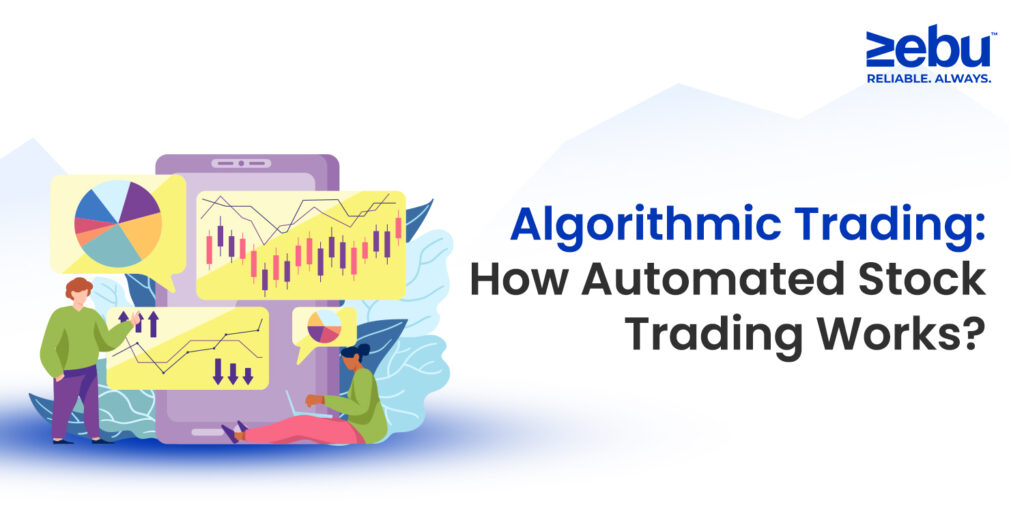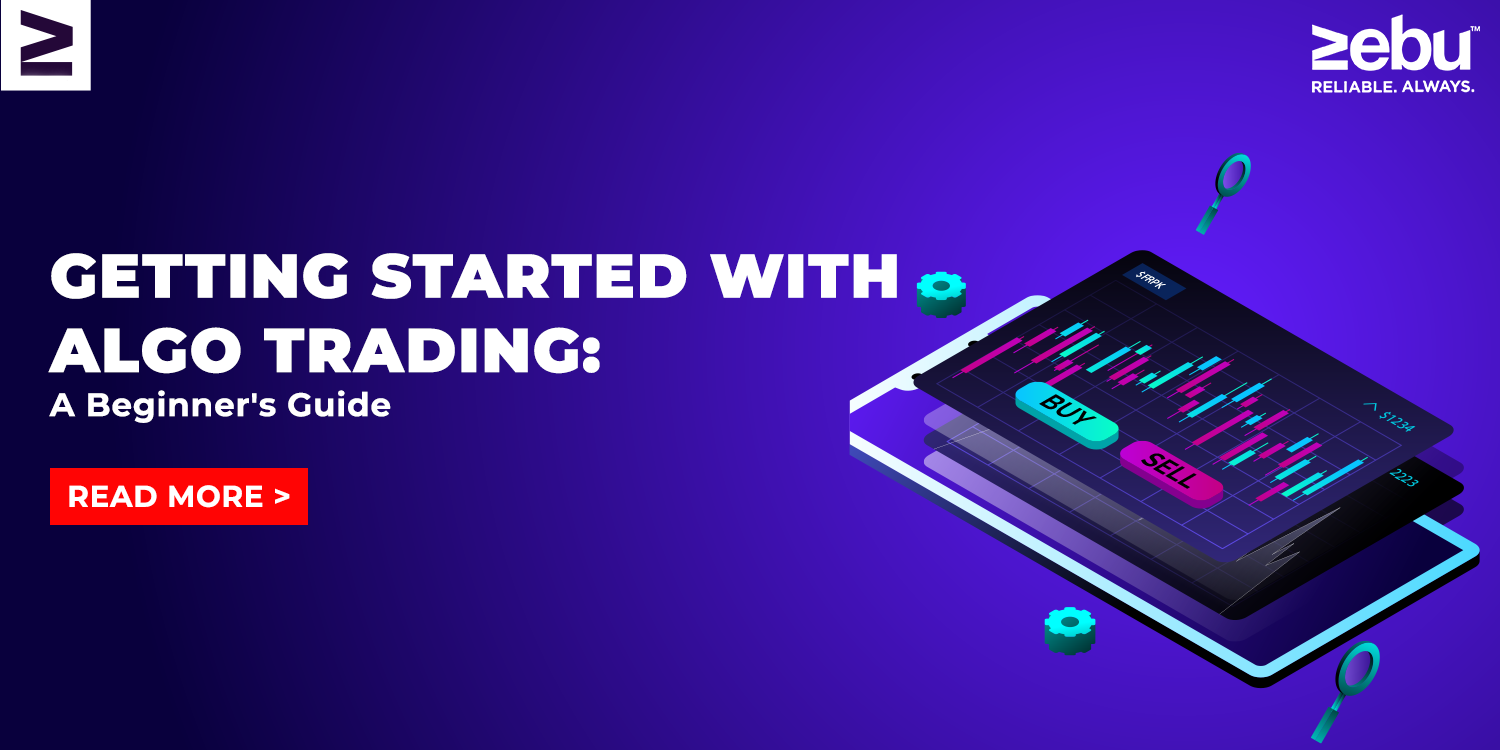
Walk into any trading room today and chances are, you’ll hear less shouting and more typing. Markets have changed. They’ve become faster, more data-driven, and in many cases — automated. One of the biggest forces behind that shift is algorithmic trading.
You don’t have to be a hedge fund to use it. And you don’t need to know advanced math to understand how it works.
This post breaks down what algorithmic trading actually is, how it’s used, and why it matters for anyone who’s part of the markets — investor, trader, or just curious observer.
What Is Algorithmic Trading?
At its core, algorithmic trading (or algo trading) is using a set of instructions — an algorithm — to place trades automatically.
Rather than clicking “Buy” or “Sell” manually, you set up conditions. For example: “If this stock crosses ₹500 and volume spikes by 20%, then buy 50 shares.” Once that condition is met, the trade executes on its own.
These rules can be simple or complex. Some involve just one indicator. Others might use dozens, tracking price, volume, volatility, time, or news sentiment — all at once.
The point is to take emotion out of the equation. No second-guessing. No hesitation. Just execution.
Why Algorithms Took Over
It wasn’t always like this. Trading used to be more about instinct and gut feel. And in some corners, it still is. But a few things changed:
- Speed matters: Markets move fast. If you’re placing trades manually, you’re already a few seconds late.
- Data exploded: We now have access to more data than ever. Algorithms are better at processing it than humans.
- Consistency helps: A well-tested algorithm doesn’t get tired, emotional, or distracted.
As technology got better, institutional traders leaned in. They built models, tested them on years of price data (called backtesting), and ran trades automatically. Over time, this approach filtered down to retail platforms too.
Today, even individual traders can use or build simple algorithms — no programming degree required.
How Does Algo Trading Actually Work?
Let’s say you’ve noticed a pattern: when a certain stock’s 10-day moving average crosses above its 50-day moving average, the price tends to rise.
Rather than wait and watch for that pattern to form, you create an algorithm:
IF 10-DMA > 50-DMA AND Volume > 1.5x average
THEN Buy X shares
Now your system watches the market 24/7. When that condition is met, it triggers the trade.
Once in, you can also automate exits:
IF price falls 3%, then exit (stop-loss)
OR if price rises 8%, then exit (target met)
Some traders use platforms that let them build these conditions visually. Others code them using Python or platforms.
Types of Algorithmic Strategies
Algo trading isn’t one thing. There are different approaches based on what the strategy is trying to do. Here are a few common types:
- Trend-Following Algorithms
These systems look for signs that a stock is gaining momentum and ride the trend. Moving averages, breakouts, and volume spikes are common inputs.
- Mean Reversion Models
Here, the logic is that prices eventually return to average levels. If a stock shoots up too far, too fast, the algorithm might short it, betting on a pullback.
- Arbitrage Strategies
Some algos track price differences between exchanges or related instruments. If a stock is priced slightly higher in one market than another, the algo buys in the cheaper one and sells in the pricier one — locking in the spread.
- Market Making Bots
These algorithms constantly post buy and sell orders to capture small spreads. They’re used by high-frequency traders to provide liquidity and earn micro profits from each trade.
- News-Based and Sentiment Algos
These analyze headlines or social media feeds. If news about a company turns sharply negative or positive, the algo might react faster than any human could.
How Traders Use Algorithmic Tools
Not everyone writes code. Many traders use platforms with drag-and-drop builders, backtesting tools, or prebuilt templates.
These tools help:
- Create rules visually (e.g., “if RSI drops below 30…”)
- Test the strategy on past data to see how it would’ve performed
- Adjust stop-losses and targets before deploying live
Traders also run these in paper trading mode before going live. That way, they can watch how the strategy behaves without risking money.
Pros of Algo Trading
Let’s be real — there are things algorithms do better than humans:
- Speed: Trades happen instantly. No lag.
- Discipline: The strategy sticks to the plan, always.
- Backtesting: You can simulate performance using years of past data.
- Scale: An algo can track dozens of stocks at once — something a manual trader can’t do efficiently.
Risks and Limitations
But this isn’t magic. Algorithmic trading has its risks:
- Overfitting: A strategy might work great on historical data, but fail in live markets.
- Technology issues: Power cuts, server crashes, or internet lag can disrupt execution.
- Changing markets: A pattern that worked last year might not work this year.
- False signals: Indicators sometimes give conflicting or misleading cues, especially in choppy markets.
That’s why many experienced traders constantly review their algorithms — tweaking inputs, adjusting filters, or pausing when conditions change.
Where Do You Run an Algorithm?
Some brokers offer API access — a way for your algorithm to connect directly to your trading account. Others offer plug-and-play systems. Most allow paper trading, backtesting, and demo environments — so you can experiment before going live.
Is Algorithmic Trading Right for You?
If you enjoy strategy building, like testing ideas, and prefer rule-based execution over gut feelings — algo trading could suit you.
You don’t need to be a quant or a full-time coder. Many tools today let you build logic without writing a single line of code.
But patience matters. You’ll need to:
- Test
- Observe
- Tweak
- Re-test
- And sometimes, walk away from a strategy when it stops working
It’s not about perfection. It’s about being systematic and adaptable.
Final Thoughts
Markets are noisy. Prices move for all kinds of reasons. As a trader, your edge often comes from staying consistent when others react emotionally.
Algorithmic trading is just one way to do that.
It lets you step back from the screen, focus on strategy, and let the system handle execution. That’s not just efficient — it’s often more sustainable. But like any tool, it’s only as good as how you use it. Understanding when to run it, when to pause, and how to learn from each trade — that’s the real skill.
Whether you’re building your first bot or exploring what algo trading can offer, the most important thing isn’t automation.
It’s intention.
Disclaimer:
This blog is for informational purposes only and does not constitute financial advice. Automated trading involves risk. Please consult a registered advisor before making trading decisions. Zebu Share and Wealth Management Pvt. Ltd. does not guarantee the success or outcome of any strategy mentioned.


